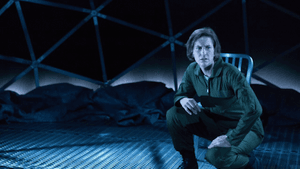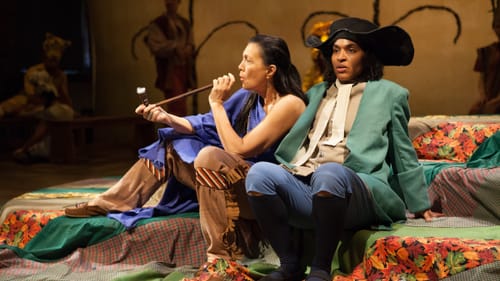Stay in the Loop
BSR publishes on a weekly schedule, with an email newsletter every Wednesday and Thursday morning. There’s no paywall, and subscribing is always free.
Not separate, but still unequal
Philadelphia's parity problem

Last week, Terry Teachout penned a Wall Street Journal essay addressing the lack of parity for female playwrights in American theater. The column was partly inspired by statements from playwrights Paula Vogel and Lynn Nottage, who decried an uneven playing field for women writers. Vogel and Nottage are case studies of the obstacles women face: both are Pulitzer Prize winners decades into fruitful careers, and both made their Broadway debuts only this year.
Inclusiveness: Illusion versus reality
This speaks uncomfortable truths regarding the illusion versus the reality of theater’s inclusiveness. Though it trumpets itself as a welcoming space for people of all sexualities and genders (or lack thereof), Teachout says that, nonetheless, “between one-fifth and one-quarter of plays professionally produced in the U.S. are by women.”
After reading the column, I thought about parity in my own backyard. Many of Philly’s finest resident actors, directors, and playwrights are female or gender-nonconforming, nonwhite, and openly LGBTQ+. More than a half-dozen women run theater companies in the region, and Theatre Philadelphia recently named Leigh Goldenberg its first executive director. Jacqueline Goldfinger keeps winning playwriting prizes, Mary Tuomanen produced three new works in 2017 (and counting!), and what isn’t multi-hyphenate extraordinaire Kittson O’Neill doing?
But numbers don’t lie. The works produced by Philadelphia’s major theaters during the 2016-2017 season skew male and white. None of Walnut Street Theatre’s 10 shows were written by women — unless you count A Child’s Christmas in Wales, which Charlotte Moore conceived from Dylan Thomas’s extant writings. Arden Theatre Company and Philadelphia Theatre Company each offered one woman-authored play. Wilma Theater and Lantern Theatre Company both produced one play written by a female playwright and one co-authored play.
I thought perhaps mid-sized companies — which tend to attract younger audiences and cater to fewer older donors — might be in a better position to foster diversity. But like their more established counterparts, Azuka Theatre, Theatre Exile, Theatre Horizon, and Curio Theatre Company all produced one female playwright in 2016-2017. The New York Times's Laura Collins-Hughes labeled this laziness "theatrical manspreading," and she knows a thing or two about how it works.

Classic = male
Several Philly theaters specialize in classics, an area that holds many hidden treasures of women's playwriting. Quintessence Theatre Company was founded in 2009 as a home for classical works in Philadelphia. The company takes a high-minded approach to diversity; founder and artistic director Alexander Burns wrote in Broad Street Review that “Quintessence has strived to reflect the diversity of Philadelphia in our productions.” That noble goal hasn’t extended to women writers: Quintessence’s first seven seasons exclusively featured plays written by men. Why ignore Aphra Behn, Hannah Cowley, or Rachel Crothers? The classics-focused Philadelphia Artists’ Collective hardly fares better. Since its 2008 formation, it has produced just two woman-authored works: a reading of Susanna Centlivre’s The Basset Table and Brenna Geffers’s adaptation of The Oresteia.
EgoPo’s 2015-2016 season was dubbed “The Women Festival” and included some fascinating programming: Sophie Treadwell’s brilliant expressionist drama Machinal, alongside familiar titles such as The Children’s Hour and The Women. They also presented Trifles by Susan Glaspell, the second woman to win a Pulitzer Prize for Drama. A proto-feminist and early champion of Eugene O’Neill, Glaspell is largely forgotten today; her interesting, funny, and subtly political plays merit a second glance. EgoPo deserves commendation, but its season highlights another problem: the segregation of women writers into all-female programming blocs, which can then be used as evidence of equity when companies revert back to producing all dudes all the time.
Gender equality and beyond
Some larger and mid-sized theaters approach true parity. Five of the nine plays produced by People’s Light and Theatre Company last season were written or cowritten by women. InterAct Theatre Company’s four-play season was 50 percent woman-authored; next season, two of its four plays are written by trans artists. Simpatico Theatre Company produced two plays in 2017: Ironbound by Martyna Majok and Hir by Taylor Mac, who is gender-nonconforming. The recently released schedule for 2017’s Curated FringeArts includes new works by Annie-B Parson, Tina Satter, Erin Markey, and Kate McIntosh.

The greatest commitment to equity comes from small companies and collectives, such as the “women-centric” ReVamp Collective and the writer-focused Orbiter 3. Carly Bodnar and Erin Carr founded ReVamp in 2014 to “create a space for women to create.” Their programming agenda has included short plays, staged readings, and full productions representing a diverse slate of emerging female and feminist voices. By the time Orbiter 3 disbands early next year, four of its seven plays will have been written by women.
Conversations surrounding gender parity in theater must also include discussions of race. The overwhelming majority of women-authored plays presented in Philadelphia last season were by white authors. Among the major and mid-sized theaters in Philadelphia and the surrounding suburbs, I count four productions of plays written by women of color: Tracey Scott Wilson’s Buzzer, at Theatre Exile; Mia Chung’s You For Me For You, at InterAct; Katori Hall’s The Mountaintop, at People’s Light; and Pulley & Buttonhole’s One More River to Cross: A Verbatim Fugue, by Lynn Nottage. That’s simply not enough.
What to do?
There are several ways Philly’s larger companies can foster and improve their commitment to representational equity. Artistic administration could hire theater makers like Bodnar, Carr, Orbiter 3’s Maura Krause, and Women’s Theatre Festival founder Polly Edelstein as consultants. These artists have proven track records getting female voices on stage. Companies lacking in representative programming can also learn from larger theaters, like People’s Light and Pig Iron, that regularly deliver diverse seasons. Recently, playwright Ifeyinwa Frederick floated a yearlong moratorium on Shakespeare. “There are playwrights out there writing stories with casts that reflect the world we live in today,” she wrote. “If the industry could stop indulging in Shakespeare for a year, we could give these voices a chance.” Sign me up — and add Tennessee Williams, Eugene O’Neill, and David Mamet to the list. Check out Parity Productions and the Kilroys instead.
Theater has the potential to hold a mirror to society — but how honest can the reflection be if half the population accounts for only 20 percent of stories told? If women writers of all backgrounds cannot attain equal footing, does theater just passively reinforce the status quo? I find myself coming back to a sentiment espoused by ReVamp’s mission statement: “Art is created to give a voice to those without a platform. And until diversity is mainstream — including gender, race, sexuality — there is still art to create and stories to express.” Women writers create art encompassing a vibrant array of experiences and worldviews. Doesn’t that pair neatly with the goals of stages of all sizes throughout our city?
Sign up for our newsletter
All of the week's new articles, all in one place. Sign up for the free weekly BSR newsletters, and don't miss a conversation.

 Cameron Kelsall
Cameron Kelsall